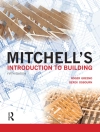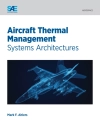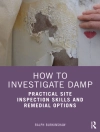Efficient communication, collaboration, data exchange and sharing
are crucial for the success of today’s many multi-disciplinary and
interdisciplinary work environments. The implementation of computer
integrated environments (CIE) is increasing and the requirements
engineering necessary for the development of these systems is
critical.
Requirements Engineering for Computer Integrated Environments
in Construction provides an important source of information and
advice for organizations needing bridge the gap between users and
developers in the implementation of computer integrated solutions
as well as for consultants providing services to their clients in
CIE development.
The framework explained in the book is comprehensive and
accessible. It provides a set of tools and techniques enabling
readers to design, manage and deliver effective CIE-type systems in
any complex organization – from construction and
manufacturing to the information technology and service sectors.
Construction companies for example, can use the framework provided
to implement building information modelling to manage the
diagnosis, planning, implementation and monitoring stages in BIM
adoption.
Based on real experiences and lessons learned from many years of
system development, this book offers an excellent resource for
researchers and postgraduate students interested in CIE development
for all multi-disciplinary and interdisciplinary work
environments.
قائمة المحتويات
Foreword
Preface
Acknowledgments
List of Abbreviations
Chapter 1 Introduction
1.1 Definitions
1.2 Why Requirements Engineering Is Needed for the CIE
Development
1.3 How the Requirements Engineering Approach Is Formulated
Chapter 2 Requirements Engineering in Software Development
2.1 Introduction
2.2 Requirements Engineering
2.3 Requirements Fundamentals and Principles
2.4 Requirements Engineering Process
Chapter 3 Computer Integrated Environments
3.1 Introduction
3.2 The Construction Industry and its Features
3.3 The Scope and Roles of CIE in Construction
3.4 Implementation of CIE in the Construction Industry
3.5 The CIE Case Study Project 1
3.6 The CIE Case Study Project 2
3.7 The CIE Case Study 3
3.8 The CIE Case Study 4
Chapter 4 Requirements Engineering in CIE Development for the
Construction Industry
4.1 Introduction
4.2 CIE Systems from Technological Perspective
4.3 Requirements Engineering in the CIE Community
4.4 Interviews in the Construction CIE Community
Chapter 5 Evaluation of Requirements Engineering Processes
5.1 Introduction
5.2 Improving the Requirements Engineering Process
5.3 Measuring the Success of Requirements Engineering
Process
5.4 Comparative Analysis and Evaluation
Chapter 6 Requirements Engineering Approach in the Case Study
Projects
6.1 Introduction
6.2 The Need for the CIE System As a BIM Tool
6.3 The Requirements Engineering Process
6.4 The Requirements Deliverables from Use Case Modelling
6.5 The Requirements Deliverables from Contextual Design
Technique
6.6 The Requirements Deliverables from the Incremental
Prototyping with the User Tests
6.7 Critical Analysis and Reflections of the Requirements
Engineering in DIVERCITY
Chapter 7 Evaluation of the Requirements Engineering
Practices
7.1 Introduction
7.2 Scope of the Evaluation and Assessment Model
7.3 The Evaluation and Assessment in Case Study 3
7.4 Survey Results and Evaluation
Chapter 8 Mastering the Requirements Engineering Practices
8.1 Introduction
8.2 Project Start-off
8.3 Requirements Elicitation
8.4 Building a Shared Understanding
8.5 Visioning and Process Modelling (Storyboarding)
8.6 System Design
8.7 Use Case and Object Modelling with UML
8.8 Incremental Prototyping with the End User Tests as an Agile
Process
8.9 Summary of Mastering the Requirements Engineering
Process
Chapter 9 Evaluation of the Proposed Requirements Engineering
Framework
9.1 Introduction
9.2 Internal (Dependent) Evaluation
9.3 External (Independent) Evaluation
Chapter 10 Summary and Conclusion
10.1 Introduction
10.2 Contribution to Knowledge Society
10.3 Main Conclusions
10.4 Recommendations for the Future
Index
عن المؤلف
Ghassan Aouad, is Dean of the Faculty of Business,
Law and the Built Environment and Professor of Construction IT
& Management within the School of the Built Environment.
Dr Arayici is a researcher in Geomatics Engineering in
the Civil Engineering Faculty, Technical University of Istanbul,
Turkey.












